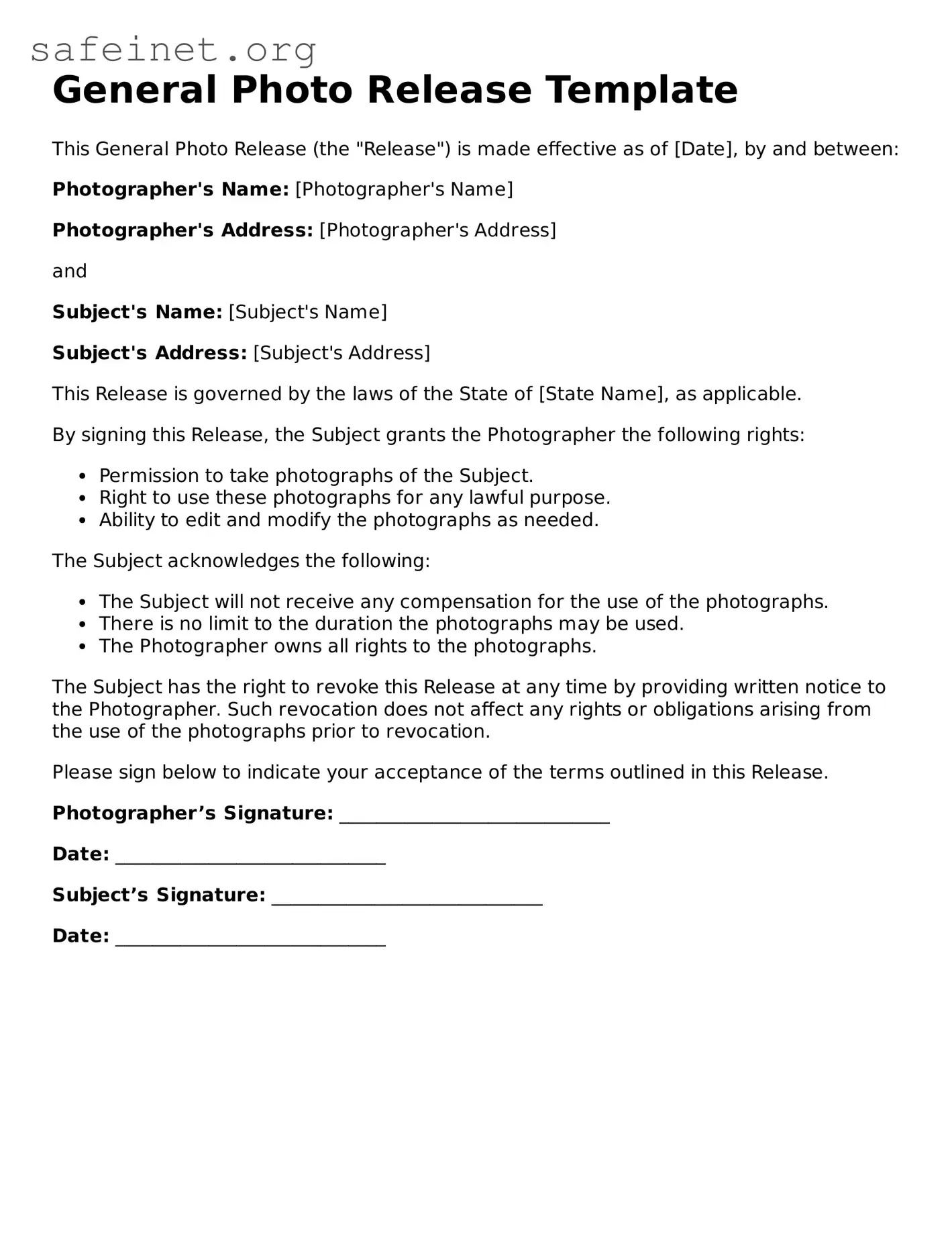The General Photo Release form is similar to the Model Release form, which is commonly used in the photography and entertainment industries. Both documents grant permission for the photographer or filmmaker to use an individual's image for commercial purposes. A Model Release, however, is specifically geared toward individuals who are being paid for their likeness, and it often includes additional terms regarding compensation and the scope of usage. This ensures that the rights and responsibilities of both parties are clearly outlined.
The Property Release form serves a different purpose but is just as essential. This document allows a photographer to use images of private property for commercial projects. Unlike the General Photo Release, which focuses on individuals, the Property Release is about permissions from property owners. It helps to prevent potential legal issues regarding the use of someone's property in promotional materials or publications.
A Talent Release is yet another similar document. Used typically in the film and television industry, this form secures the rights to use an actor's or performer’s likeness and performance in productions. While a General Photo Release covers still images, a Talent Release often encompasses video and includes specifics about the content created with that talent, ensuring a clear understanding between the creator and the performer.
The Commercial Use License is comparable as well, especially in situations where photographers plan to monetize their work. This document details the specific ways in which images can be used commercially. Whereas a General Photo Release may focus on consent, a Commercial Use License further establishes the terms of use and can include royalty agreements or distribution limitations.
The Artistic Release form aligns closely with artistic projects. This type of release is usually utilized by artists who include models or subjects in their work. It grants the artist the rights to portray the model creatively and can also specify the context in which that work can be shared or exhibited, ensuring artistic intent is preserved.
The Editorial Use Release focuses on a different aspect of image usage. This document is relevant when images are used for editorial purposes, such as in newspapers or magazines. A General Photo Release doesn’t limit the use of photos to just editorial or commercial purposes, but the Editorial Use Release ensures that any images used in this context meet specific standards and permissions relevant to editorial use.
In social media and digital marketing, the Social Media Release serves a related function. This document allows individuals or brands to utilize photos for social media purposes. It can sometimes include terms that adapt to the fast-paced nature of digital content, ensuring that the subjects understand how their images will be shared widely, often without the traditional constraints of print releases.
A Video Release form is akin to the General Photo Release but is specific to moving images. It grants permission to capture and use video footage of individuals for various purposes. This form provides clarity on how the footage will be utilized, whether for promotional videos, online content, or commercial advertisements, thus protecting both the creator and the subject.
The Press Release format can also incorporate aspects relevant to the General Photo Release. While primarily used for communicating news, a Press Release can include imagery, often requiring consent from individuals photographed within the content. This ensures that any accompanying images in news releases are appropriately authorized, thus safeguarding against potential disputes over image use.
Lastly, the Consent for Use form is similar as it outlines permissions surrounding the use of images and recordings. This document can be broader in scope, extending beyond photographs to cover audio or video recordings. Like the General Photo Release, it ensures that all parties involved understand how their likeness will be used, fostering clear communication and minimizing misunderstandings.
